12 powerful digital tools to become the best marketer
Use these 12 powerful digital tools to become the best marketer
1. KAMUA – Convert your horizontal videos into YouTube Shorts
Kamua is a browser-based tool that automates the un-fun parts of video editing. No software downloads, no file synching, no editing experience.
The team at KAMUA argues their tool is the fastest way to cut, resize and caption videos.
User benefits:
- Fully browser based;
- You work 50-90% faster;
- No previous experience required;
- Captions & Subtitles in 60 languages;
- Ultra fast cloud computing;
- A.I. automation of hard boring tasks.
2. NOTION – Complete your tasks faster to focus on creative projects
Are you looking to cut down on interruptions and stay more focused on your priorities? Check out Notion!
Notion is a new tool that blends your everyday work apps into one. It’s the all-in-one workspace for you and your team where you can customize your workflow.
Notion solves problems unique to every function from product, engineering and design to HR, sales and marketing.
3. RANK MATH – Improve your blog’s keyword ranking in Google
Rank Math is a Search Engine Optimization plugin for WordPress that brands itself as the Swiss army knife of SEO.
Just like the famous multi-purpose red tool, Rank Math provides users with a wide range of SEO focused features.
Main Rank Math benefits:
- Measure and track SEO rankings;
- Built-in advanced SEO analytics module;
- See the keywords which your website ranks for;
- Keep track of your website’s rankings;
- Check the search trends for keywords and even compare them.
4. UNSPLASH – Boost your organic reach with top quality photos
Every marketer knows that beautiful images are essential on social media.
They enhance the message and provide users with a reason to stop scrolling the feed.
Choosing the right visuals is especially important when creating advertising campaigns. Your campaign image must be impactful to boost the organic reach of your ads.
5. TAILWIND – Get discovered on Instagram with the right mix of hashtags
Tailwind is a social media scheduling tool that provides users with design, scheduling and analytics tools. This platform is particularly useful for marketers who focus their work on Instagram and Pinterest.
Tailwind acts as an Instagram Assistant which transforms your photos into hundreds of optimized, personalized designs for Instagram, Facebook and Pinterest.
Through its Hashtag Finder feature, Tailwind helps users get discovered by the right followers.
As for Pinterest, Tailwind users can create a scroll stopping Pin in less than 2 minutes.
Here’s one piece of statistics that will pique the interest of every marketer: on average, Tailwind members get 1.8x more likes on Instagram & 6.9x more Repins on Pinterest.
6. CANVA – Design email headers your subscribers will love
Canva is a graphic design platform, used to create social media graphics, presentations, posters, documents and other visual content.
This tool was created with non-designers in mind and its templates allow for anyone to design beautiful imagery.
Canva’s latest features include video messages, curved text, content planner, text effects and animated stickers.
7. MINDMASTER – Win the pitch with a visual design of your ideas
MindMaster is a full-featured collaborative mind mapping and brainstorming tool.
Marketers can use MindMaster to explore ideas and communicate information.
With MindMaster’s built-in presentation feature, you can turn mind maps into beautiful, dynamic slideshows in seconds.
Once the presentation is done, you can export the slides as an editable PPT or PDF file.
8. ARTLIST – Boost your ads conversion rate with powerful music
Artlist is a go-to library of high-quality royalty-free music and sound effects created by inspiring indie artists.
Music is an integral part of storytelling. It adds to the overall emotional outline of the content.
9. THE SCALE LAB – 10x your email reply rate
The Scale Lab is a B2B lead generation tool and a great resource for marketers looking to improve their copywriting skills.
Email is the king of marketing ROI. When done correctly, email marketing has an average ROI of 42$ for every 1$ spent.
When you use email to nurture B2B sales, the main goal of your copy is to get prospects to reply.
Here are 3 recommendations from the team at The Scale Lab about how to increase your email reply rate:
- Use the AIDA Model (grab Attention which sparks Interest which creates Desire which leads to Action);
- Focus on Benefits Over Features;
- Focus on the Prospect & Personalize.
10. UNBOUNCE – Match each visitor to the landing page where they’re most likely to convert
Unbounce is one of the leading landing page platforms that helps you convert more of your visitors into leads, sales, and customers.
Smart Traffic is a new feature of Unbounce which boosts user’s conversion rates with AI-powered optimization.
The feature automagically looks at your visitors’ attributes and sends them to the variant that’s most relevant. Smart Traffic starts optimizing in as few as 50 visits.
11. TALKIA – Increase engagement on your videos with an A.I. voiceover
Talkia uses text-to-speech software to create professional voiceovers that sound like real human voices.
The main benefit of using a professional voiceover is increased engagement.
Viewers who watch the video from start to finish are more likely to convert.
But professional voiceovers are expensive. Technology is the answer for the content creators that are looking for a different solution to their needs.
Talkia uses WaveNet technology which is the closest to human speech of all the technologies on the market today.
12. SWPELY – Create a swipe file for today’s content
Swpely is a Chrome extension that reinvented content saving.
Swpely makes it easy to collect all the great content you find.
Why do you need Swpely?
Because today’s content isn’t just websites and images. Its videos, podcasts, tweets, LinkedIn posts, and more. Bookmarking isn’t enough anymore.
5 billion-dollar companies founded and run by women
Discover five companies worth billion of dollars founded and run by entrepreneurial women.
1. Grab, $16 billion valuation
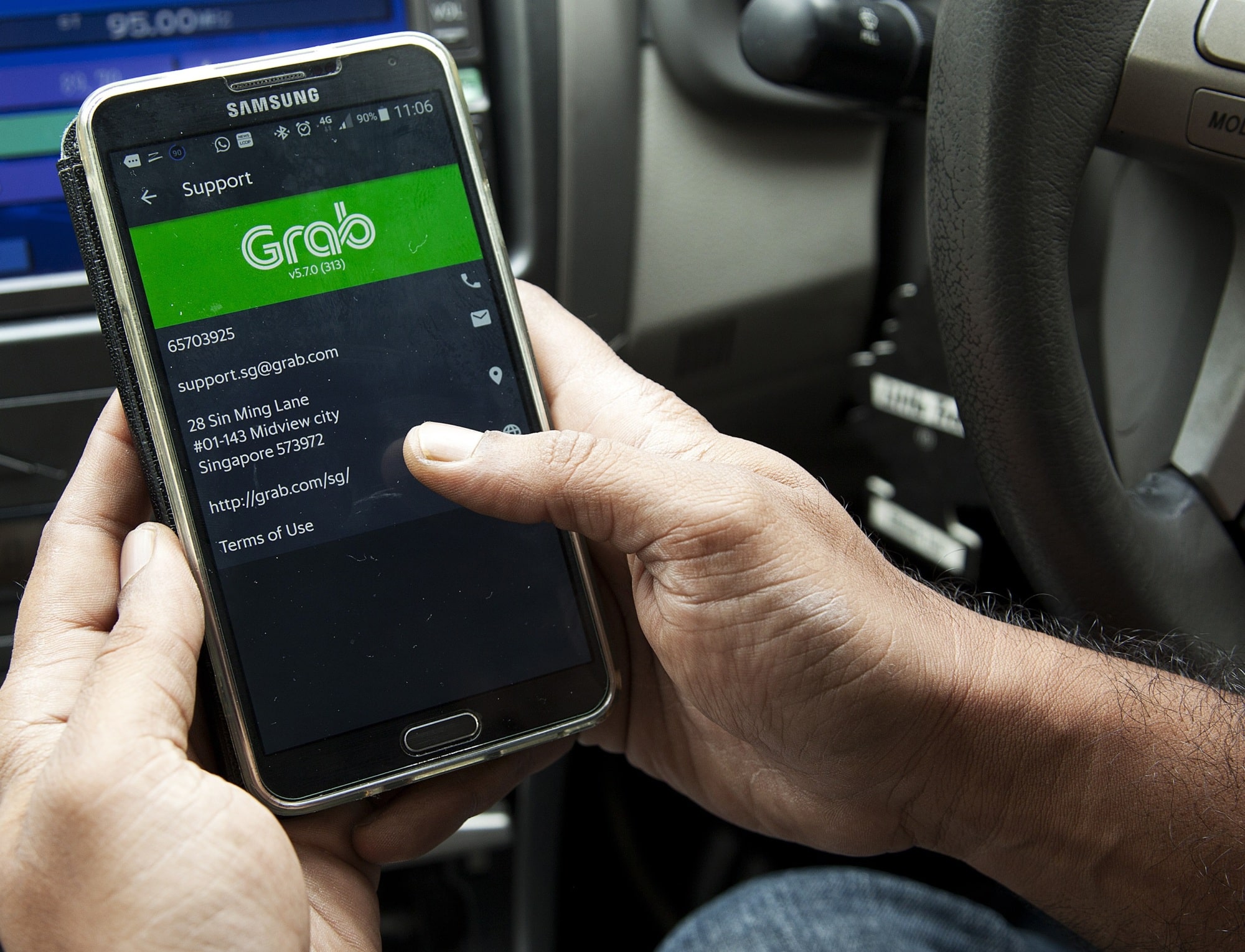
Grab is Southeast Asia’s most valuable startup.
The Singapore-based company is the region’s largest mobile technology company, a one-stop shop service app co-founded by Tan Hooi Ling in 2012.
According to the latest statistics, Grab has 187 million users in 330 cities across nine countries: Singapore, Cambodia, Indonesia, Malaysia, Myanmar, Thailand, Vietnam, the Philippines and Japan.
Also called the everything everyday app or the super app, Grab delivers an array of digital services such as transportation, food delivery, hotel bookings, online banking, mobile payments and insurance services.
Valued at $16 billion, Grab is Southeast Asia’s first “decacorn” (a startup with a valuation of over US$10 billion).
In March 2018, Grab merged with Uber’s Southeast Asian operations, including UberEats, which led to Grab’s expansion of food delivery services: GrabFood. Uber holds a 28% stake in Grab.

Grab co-founder Tan Hooi Ling
In 2020, in collaboration with Mastercard, Grab launched GrabPay Card, the first numberless payment card in Asia.
Tan Hooi Ling, the company’s co-founder and COO, is a Harvard Business School graduate. Grab started as a taxi-booking mobile app for Southeast Asia called MyTeksi. The goal of the app was to make taxi rides safer in Malaysia.
According to Tan, one of the biggest challenges the company is hoping to help solve is the financial inclusion gap in Southeast Asia.
“An estimated 70% of the population here are unbanked and invisible to traditional banking institutions. As they cannot get access to credit or other financial services, they get trapped in a vicious cycle that makes it hard for them to break out of poverty.”, she told Business Insider.
Because of her work, Tan Hooi Ling was named to Business Insider’s annual list of the 10 leaders transforming supply chain in Asia.
2. Bumble, $13 billion valuation

Bumble is a dating app for women founded by Whitney Wolfe Herd in 2014.
How is Bumble different from its main competitor, Tinder?
Bumble puts women first: only female users can make the first contact with matched male users.
According to Statista, Bumble is the 3rd most popular dating app worldwide by number of monthly downloads and the second most popular dating app in the US following Tinder.
Before founding Bumble, Whitney Wolfe Herd co-founded Tinder. She left the famous dating app due to growing tensions with other company executives.
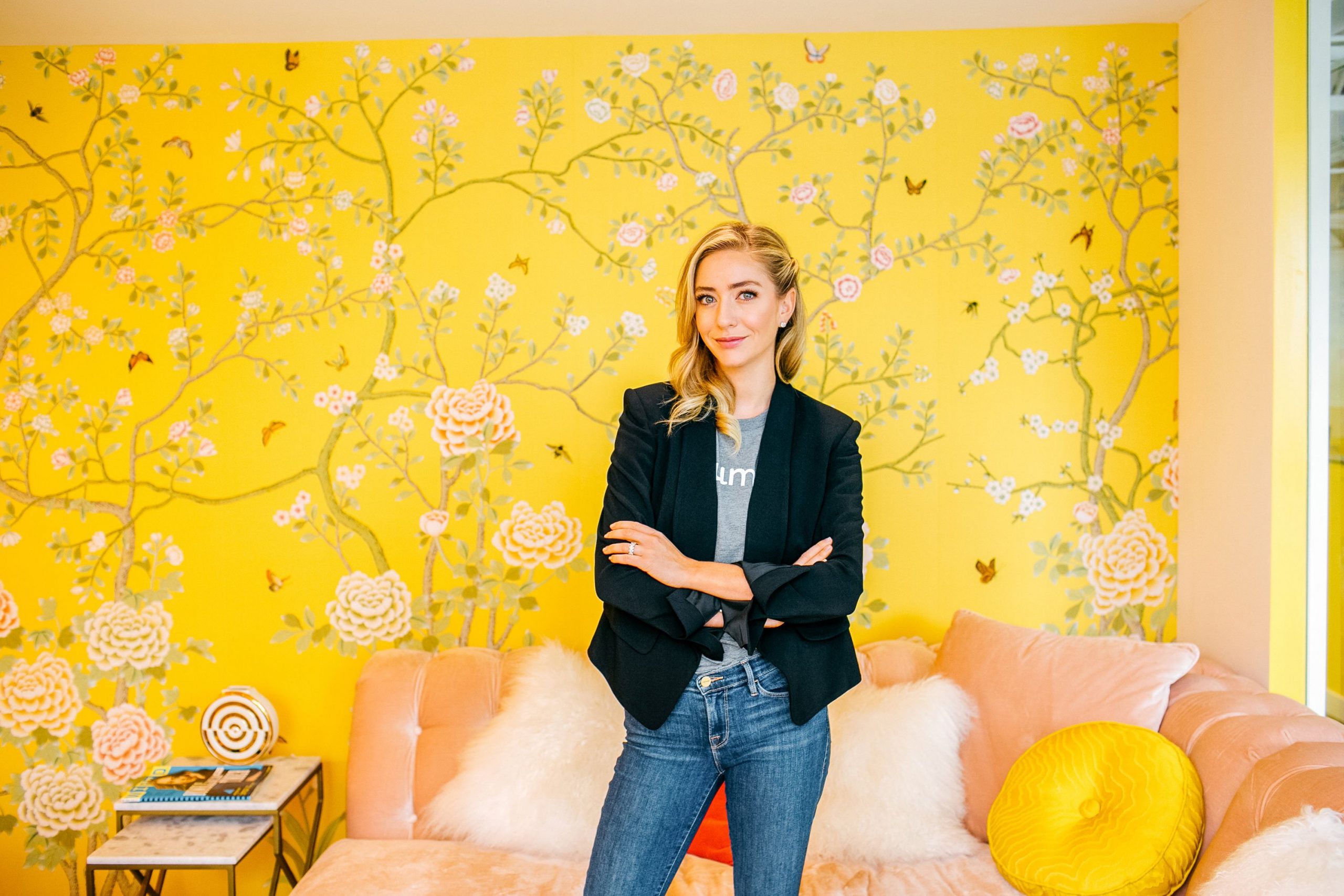
Bumble founder Whitney Wolfe Herd
Whitney founded Bumble in 2014 together with Russian entrepreneur, Badoo founder and CEO Andrey Andreev.
As of February 2021, Bumble had a reported 58 million users. In terms of revenue, Bumble logged $490 million in 2019, a 36% jump from the year before. Through the first nine months of 2020, it earned more than $415 million in revenue.
The company has been recently publicly traded. Shares jumped to more than $76 each, valuing it at $13 billion.
3. Canva, $6 billion valuation

Canva, the design platform for non-designers was co-founded in 2012 by Melanie Perkins.
The company’s mission is to empower everyone to bring their ideas to life.
Canva is one of the world’s fastest growing online design and publishing tools with 40 million monthly active users and over 3 billion designs created since launch.
Canva Pro, the company’s paid subscription has 4 million users among which renowned enterprises such as Huffington Post, Upworthy, Lonely Planet, Hubspot and Yelp.
Given that the average paid subscription is $13 we can assume that Canva’s revenue for 2020 is close to $624 million.
Canva experienced an exponential growth through 4 strategies:
- Developing a great product, listening to user feedback and testing over and over again
- Word of mouth advertising and social currency
- Influencer Advocacy
- Empowering content

Canva co-founder Melanie Perkins
In 2020, Canva partnered with Pinterest, the visual discovery engine used by over 335 million people around the world. As a creative Pinterest Partner, Canva assists Pinners in creating more engaging content quickly, with more efficient processes and best practices at the fore.
In the same year, Canva acquired two startups to fuel its growth: background remover specialist Kaleido and product mockup generator Smartmockups.
After having raised a $60 million round, the design platform announced a doubling in valuation to $6 billion.
The increase is fueled by the platform’s rapid transformation into a workplace collaboration tool as the world shifts online amidst the global pandemic.
4. Glossier, $1.2 billion valuation

Founded by Emily Weiss in 2010, Glossier is a cosmetics company.
The company grew from Into the Gloss, Emily’s beauty blog.
In the blog post announcing her company’s launch, Emily writes that Glossier is a celebration of freedom.
The freedom of “being more or less okay with wherever you’re at, at any given point in your life or your day or your hour, be it really sucky or really great or somewhere in between (and there are a lot of in-betweens.)”
Glossier champions the no-makeup makeup look and takes a customer-centric approach.
The company set out to democratize beauty by developing beauty products in collaboration with customers instead of beauty experts as is the norm in the industry.

Glossier founder Emily Weiss
Glossier’s main driver of growth has been their digital content strategy based on a mix of product focused content and user-generated content about real product experiences.
As a result, the company has been growing steadily on social media especially Instagram where Glossier has 2.7 million followers.
Last year, the company had over 3 million customers and is estimated to make over $100 million in revenue (starting with 2018).
In 2019, Glossier increased its valuation to $1.2 billion.
5. Rent the Runway, $1 billion valuation

Why buy when you can rent at a fraction of the price tag?
In the case of designer clothes, this logic makes sense and constitutes the basis of Rent the Runway, the largest designer closet in the world.
For almost $100 a month, customers can rent 8 items.
Or rent one item for as low as 15% of the retail price.
There’s certainly where to choose from: over 700 designers ranging from Diane von Furstenberg to Victoria Beckam, Maison Margiela to Paco Rabanne.
The styles featured on the site have retail value between $200 to $3500.

Run the Runway founder Jennifer Hyman and Jennifer Fleiss
A popular fashion clothing rental service, Rent the Runway was founded by Jennifer Hyman and Jennifer Fleiss in 2009.
According to the latest numbers, Rent the Runway has 8 million customers and over $100 million in yearly revenue.
In 2019, the company hit the $1 billion valuation.
Growth Story: How Canva Acquired 10 Million Users within 5 Years
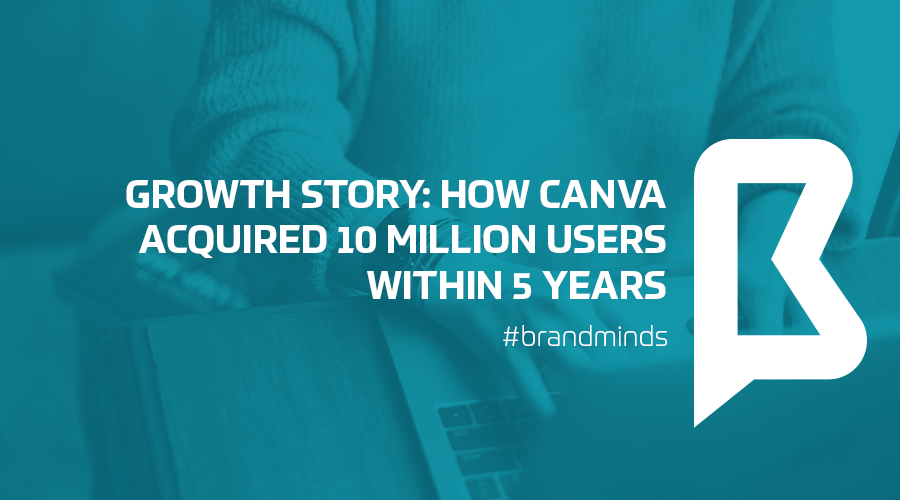
There are 2 billion people on Facebook, 1 billion on Instagram and 500 million on LinkedIn. They use images to communicate and connect on all of these platforms but they are not photographers.
There are over 70 billion businesses using Facebook Pages, 25 million business profiles on Instagram and 18 million company pages on LinkedIn. Businesses hire social media managers to craft their presence and communicate with their followers. Although they are not graphic designers, their employers require them to have image designing abilities. Photoshop and Adobe are tools designed for professional graphic designers, but they are difficult to use by noobs.
What can individuals as well as communication professionals do beside going to graphic designing school?
They use Canva.
Our goal is to enable the whole world to design.
Melanie Perkins, CEO of Canva
Canva provides graphic design software as a service; it is an online collaborative platform dedicated to people who aren’t graphic designers and don’t have funds to hire one for their various needs.

Canva’s tools are simple and very easy to use, its interface is user-friendly and intuitive. The user is provided with a wide range of templates, fonts, colors and free photos to choose from. From Facebook covers to Instagram posts, brochures, infographics, logos, wedding programs etc – you can design anything and the end result looks amazing. Canva makes its users feel empowered to design and let their imagination translate into beautiful visual imagery and graphics.

Cliff Obrecht, Melanie Perkins and Cameron Adams/canva.com
Canva by numbers
Co-founders Melanie Perkins, Cliff Obrecht and tech expert Cameron Adams launched Canva in 2012 to selected professionals.
By January 2014, Canva had 150,000 users and opened publicly.
In April 2014 Guy Kawasaki joined the team as Canva’s Chief Evangelist; two months later the number of users tripled.
By October 2014 there were 1 million users who shared their Canva-designed images on social media, blogs, emails.
In August 2015, Canva announced it has reached 4 million users.
In 2017 the Australian startup reached profitability thanks to 294,000 paying customers.
To date, the do-it-yourself design platform has more than 10 million users across 179 countries with more than 100 million designs.
Canva’s founders raised $86 million since its launch and the company is currently valued at $1 billion.
Canva’s goal is to raise its users number to 3.2 billion (according to techcrunch.com).
- +10 million users
- +100 million designs
- 3 offices
- 200 team members
- $1 billion value
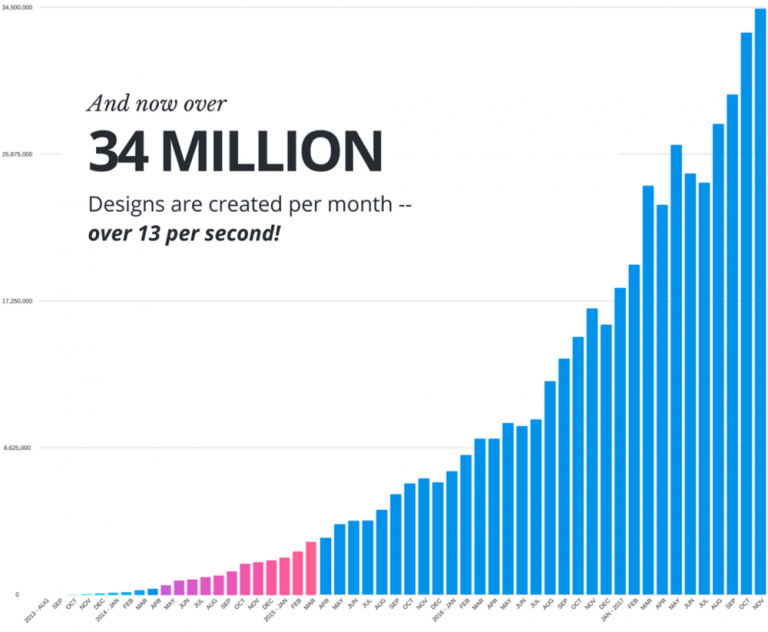
medium.com
Main reason for Canva’s success – a product which solves a problem people care about
While studying at the University of Western Australia, Melanie was teaching students how to use mainstream design software like inDesign and Photoshop, programs that people found hard to learn and even harder to use. She told bbc.com that “It could take a whole semester to learn the very basics. Even the simplest tasks, like exporting a high-quality PDF file, could take 22 clicks.”
You want to make sure that the solution you create, solves a problem that people care about. Find something that is truly significant. Find a problem faced by lots of people.
Melanie Perkins via forbes.com
She became aware she had just stumbled upon a business opportunity – the market needed a much simpler design tool and she was going to develop it. Melanie took her boyfriend Cliff on board and together started Fusion Books, an online design tool that made it easier for students and teachers to create their own yearbook. Fusion Books was a success, but Melanie and Cliff realised that the technology they had developed could be used much more broadly. They recruited Cameron Adams, Canva’s tech co-founder and the three of them began building Canva.
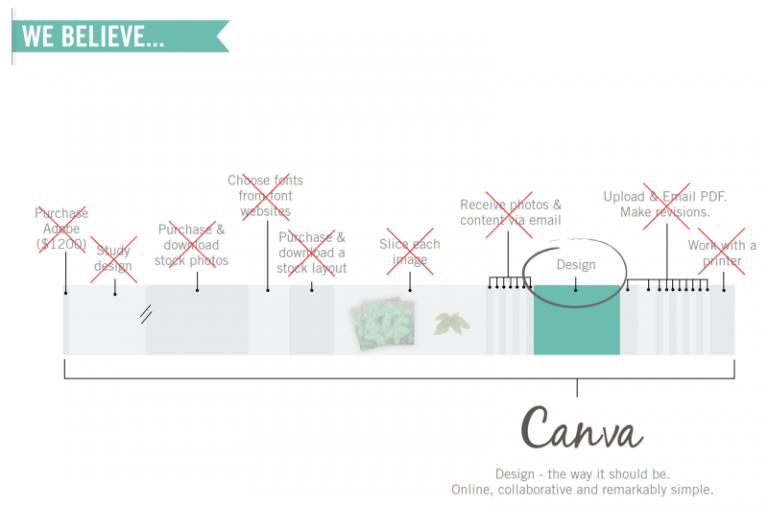
medium.com
4 strategies which supported Canva’s exponential growth
Canva never used paid advertising to tell prospects about its tool. The team developing Canva chose a different approach to grow the company.
1. Developing a great product, listening to user feedback and testing over and over again
Melanie and her team developed a good product but they postponed Canva’s launch to the public until they had a great product. After many months of continually refining, improving and testing the tools, they realised it’s not all about the digital tools, but also about empowering the users. Here is Melanie writing in her article about this moment:
It became quickly apparent that it was not just the tools themselves that were preventing people from creating great designs, but also people’s own belief that they can’t design.
In order for Canva to take off — we had to get every person who came into our product to have a great experience in a couple of minutes.
We needed to change their own self belief about their design abilities, we needed to give them design needs and we needed to make them feel happy and confident clicking around. We needed to get them to explore and play in Canva. No short order! So we spent months perfecting the onboarding experience paying particular attention to users’ emotional journey.
2. Word of mouth advertising and social currency
The 50,000 subscribers to Canva’s waiting list talked first about this amazing online design tool; this attracted early adopters, the first 150,000 people using Canva tools. These early adopters became Canva’s advertising engine by sharing their designs with their friends. Canva grew at a fast pace all through word of mouth and social proof.
Social currency in the sense of our community has always been incredibly valuable for us. More than 10 million people use Canva in 179 countries, and much of that growth has come through word of mouth and our users sharing about us.
Melanie Perkins via forbes.com
3. Influencer Advocacy
Guy Kawasaki learned about Canva through one member of his social media team who was using Canva to create graphics for his posts. When the people at Canva noticed Guy’s social media graphics were designed with their tools, they contacted him and so he became Chief Evangelist of Canva.
The reason Guy was attracted to Canva was that it “could democratise design just as Apple democratised computers and Google democratised information”. Guy Kawasaki coming to Canva and supporting it helped the online design platform double its users numbers.

Guy Kawasaki, Melanie Perkins and Cliff Obrecht/canva.com
4. Empowering content
Besides developing cool digital tools to support users craft wonderful graphics, Canva also empowers its users by helping them improve their designing skills.
Design School is Canva’s knowledge blog, the place where beginners and professionals come for design tips and inspiration. The blog is rich in resources such as tutorials and articles on how to design a brand, how to be more creative, what are the best resume or email templates etc.
One particular article, Benefits of Walking: Why the Greatest Minds take the Longest Walks, went viral with 90.5k shares on Facebook, 5.9k shares on Twitter and 2.4k shares on LinkedIn.
Did you like our article?
Share it with your friends!